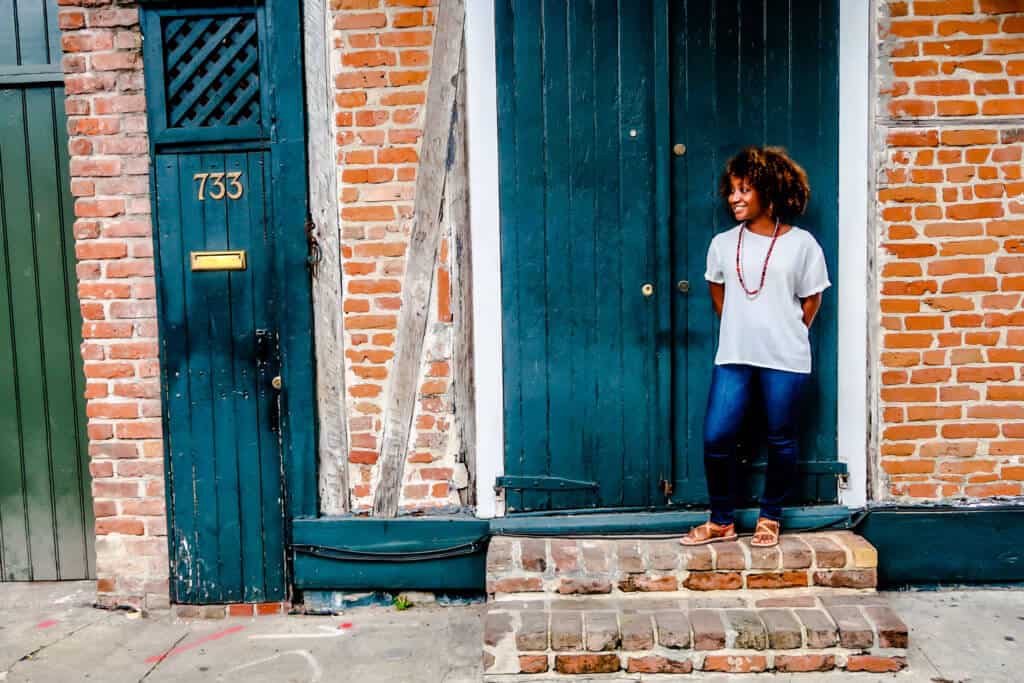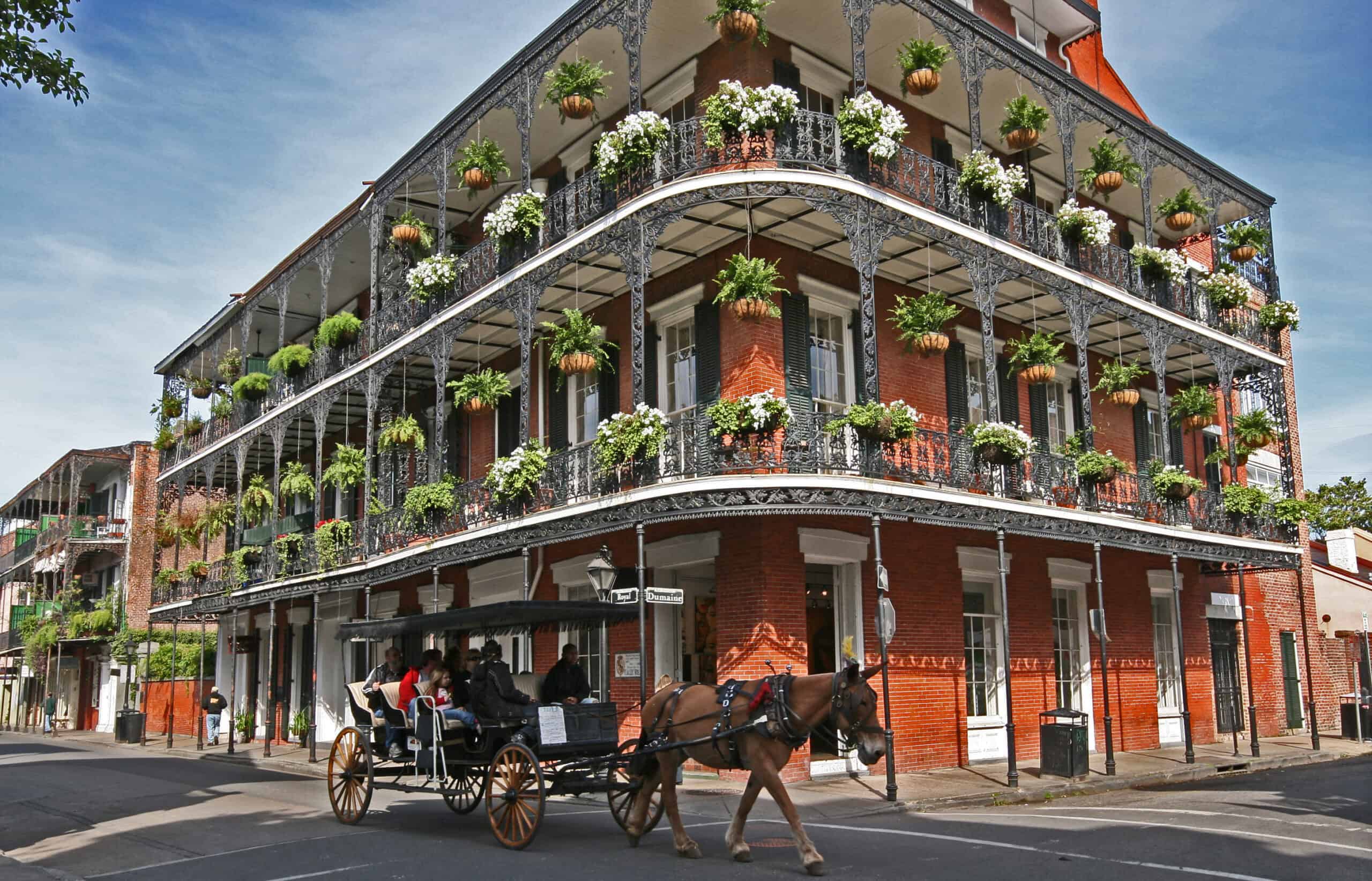2 Days in New Orleans | A Guide for First-Timers

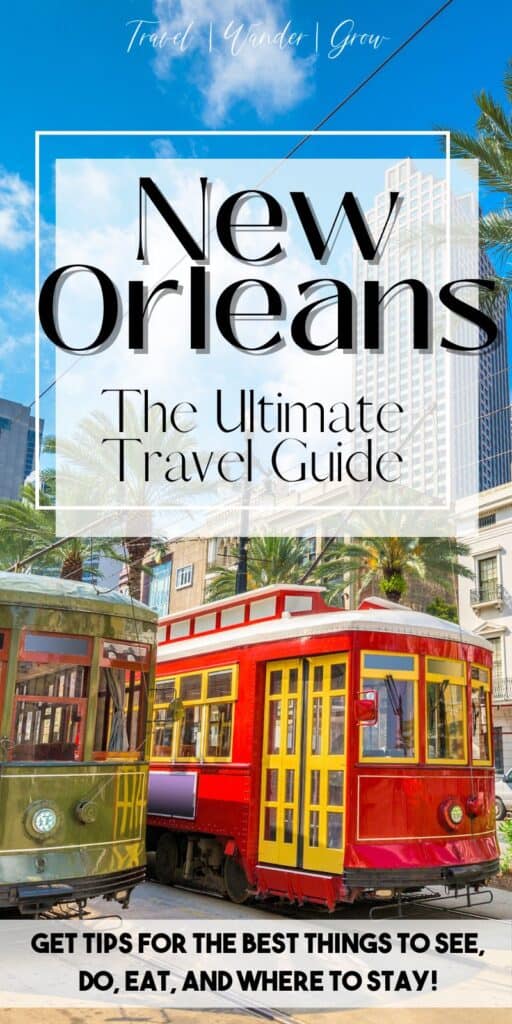
New Orleans brings to mind images of jazz and big band music, beautiful buildings, and delicious creole-style food. While these things do not fully define the city (nothing is that simple, right?), these are what make New Orleans the “coolest” and most unique city in the US.
While a large part of this country was influenced by English colonialism, New Orleans has a great deal of French, Spanish, and African influences, giving it a truly distinct feel. For this reason, it is one of my most favorite cities in the United States.
This guide provides provides all the details that you need for 2 days in New Orleans, so that you can soak up as much of the city’s charm as possible while there.
New Orleans History
The area now known as New Orleans was first inhabited by the Mississippian Native American culture, as early as 400 AD. In the late 1600s, French fur trappers found their way to the area, and the city was officially founded in 1718 as La Nouvelle-Orléans. It was an important French colonial city, becoming the capital of of French Louisiana by 1722. The city remained under the control of the French until 1763, when it was ceded to the Spanish.
While the Spanish were in control, the city was devastated by two major fires, causing most of the French colonial architecture to be replaced by the Spanish style (which is what you see today). Spain controlled the city (more or less) until 1802, when France took it back. This control only lasted temporarily however, because in 1803, Napoleon sold the area as part of the Louisiana Purchase to the US.
It’s interesting to note that, unlike most of the US, African influences can be seen in the local culture, even today. The reason for this being that slavery in New Orleans did not involve the separation of families. Slavery was different than in many parts of the country – not better, but different nonetheless. Compared to most of the US, there were more free, land-owning black people here, than anywhere else in the world. Which is why I think black culture has influenced the city differently than anywhere else.
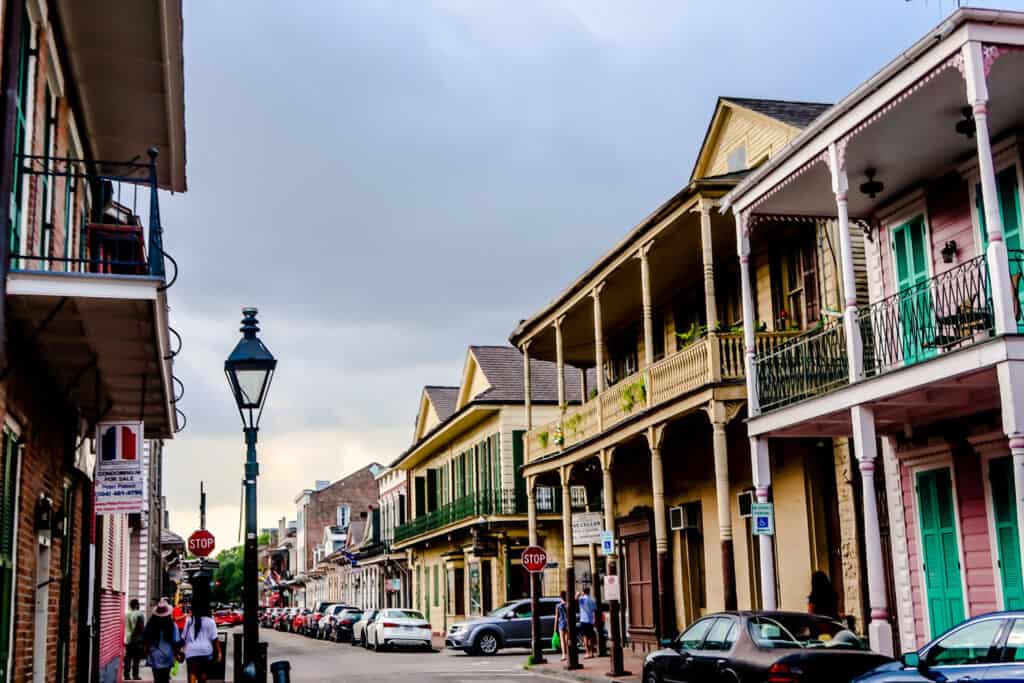
The city grew rapidly in the early 1800s, largely due to the insurgence of immigrants from Haiti. These folks came over while fleeing from the Haitian Revolution that was taking place during that time. The city to grow with settlers from Germany and Ireland, and by 1840, it was the third largest city in the US. As with most of the country at this time, the city was impacted by the changing norms around slavery.
During the civil war, the city was captured by the Union without a battle, thus avoiding the destruction that many other cities faced during this time. Once reconstruction began, race relations continued to be a struggle in the city. For example, the government abolished French instruction in schools, and momentary victories of having elected black officials, were all rolled back.
This tough period also brought with it the dawn of Jazz, which is birthed from a variety of African-influenced music (e.g., ragtime, spiriturals, and blues). This was a time (late 1800s – early 1900s) of cultural enlightenment for the city, making the city alluring to travelers throughout the country. The city has had periods of grown and decline throughout the years, and was most notably impacted by Hurrican Katrina in 2005. The has recovered since this time, being a top tourist destination in the country. It is known for the many festivals that take place in the city (e.g., Mardi Gras and Essence Festival), and is noted for its rich foods, lively music, and sports culture.
New Orleans brings to mind images of jazz and big band music, beautiful buildings, and delicious creole-style food. While these things do not fully define the city (nothing is that simple, right?), these are what make New Orleans the “coolest” and most unique city in the US.
While a large part of this country was influenced by English colonialism, New Orleans has a great deal of French, Spanish, and African influences, giving it a truly distinct feel. For this reason, it is one of my most favorite cities in the united states. This guide provides provides all the details that you need for 2 days in New Orleans, so that you can soak up as much of the city’s charm as possible while there.
The 48 Hour Itinerary: New Orleans
Day 1 | Exploring the French Quarter
MORNING
Start your first day by getting some great food. I recommend Café Amelie for an absolutely delicious breakfast. This restaurant is located in the French Quarter, and is known best for its lovely courtyard and French-style building. The restaurant is named for Amelie Miltenberger, the mother of the first American Princess of Monaco, Alice. The food here is classic New Orleans fare, and just delicious.
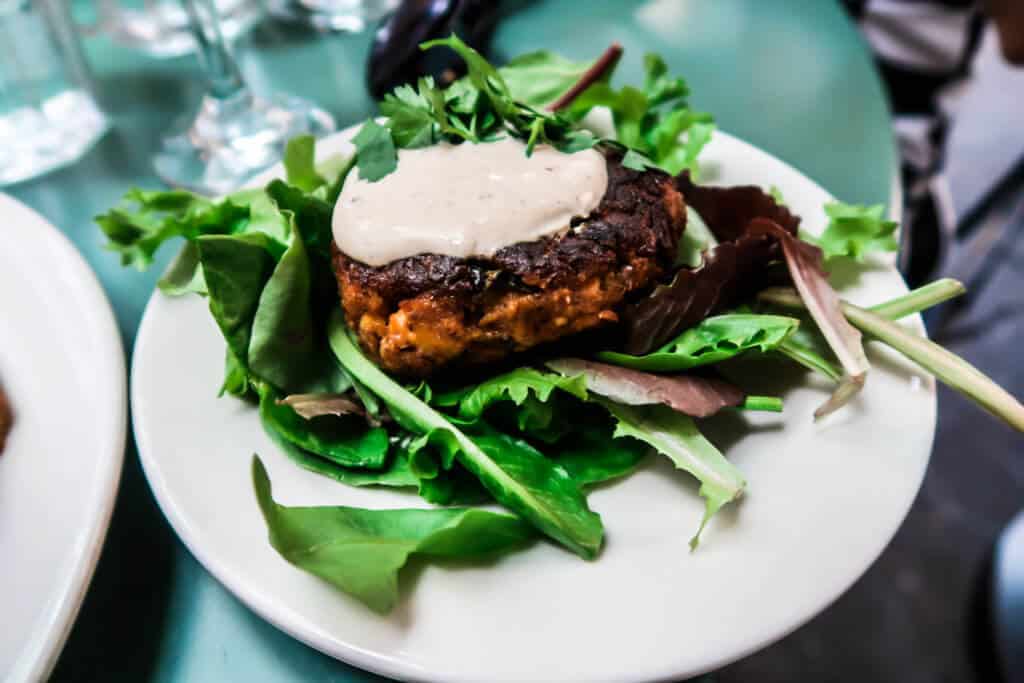
MORNING / AFTERNOON
Get to know the heart of the city by exploring the French Quarter. The French Quarter, also known as Vieux Carré, is the heart and soul of New Orleans, renowned for its vibrant nightlife and colorful architectural styles reflecting its multicultural heritage. Dominated by Creole townhouses with their beautiful balconies and secret courtyards, the area is a cultural melting pot where history, music, cuisine, and art coalesce.
I recommend exploring this area of the “Big Easy” with a local tour guide, who can explain the rich history while you take in all the beautiful buildings. The French Quarter Sites and Stories Tour is a great option for this, and will take you to sites such as:
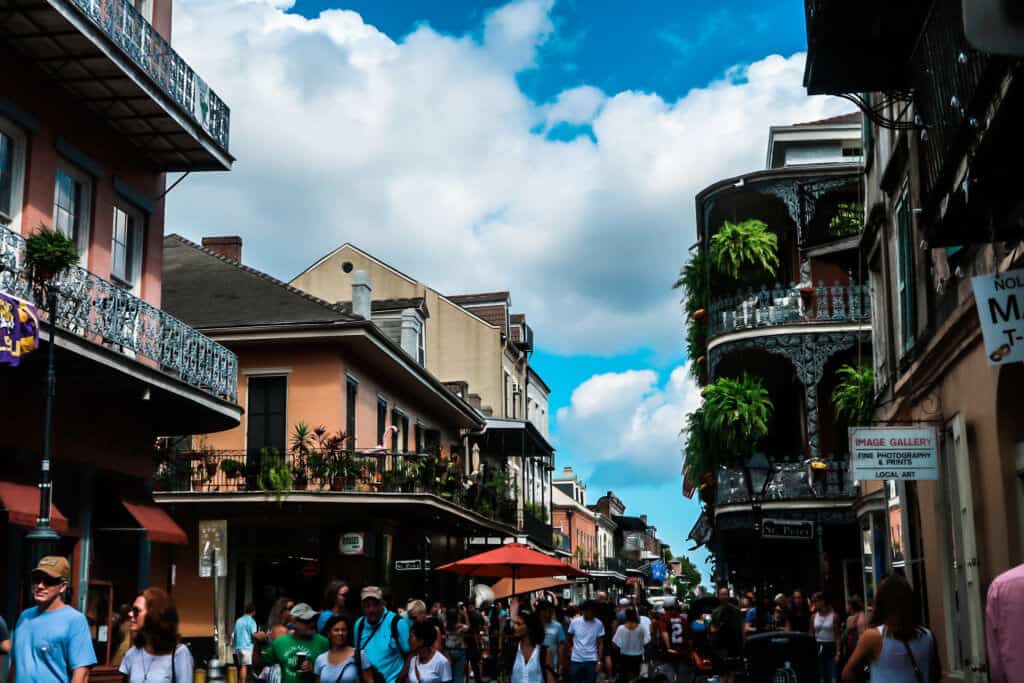
The French Market
The French Market, located just a few steps away from the bustling activity of the French Quarter, is an open-air market that has been a cornerstone of New Orleans’ culture since the late 18th century. It is the oldest of its kind in the United States, boasting a rich history that echoes the diverse heritage of the city. The market spans six blocks and is home to an eclectic mix of vendors, selling everything from fresh local produce and exotic spices to handmade crafts and artworks.
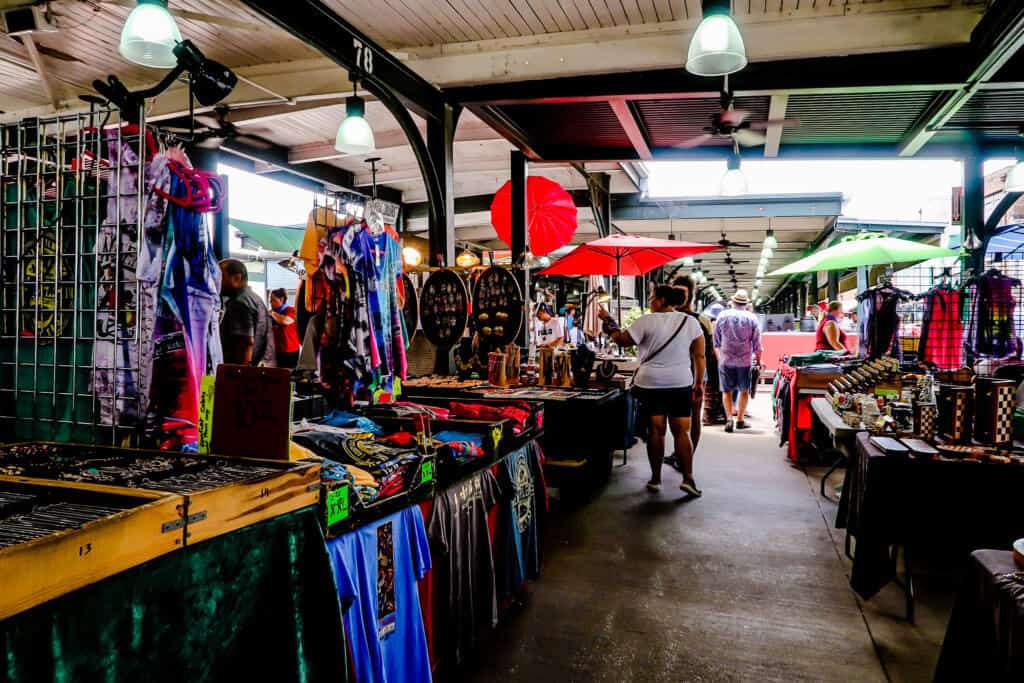
In addition to the shopping, the French Market also hosts a number of restaurants and cafes, where you can sample authentic Creole cuisine, sip on New Orleans’ famed coffee, or indulge in delicious seafood dishes. If it’s summer, it’s a good idea to pick up one of the fancy fans they sell here – believe me, you’ll need it!
St. Louis Cathedral
This Cathedral is a marvel of colonial French architecture and an iconic symbol of the city. As the oldest continuously active Roman Catholic cathedral in the United States, the cathedral holds a special place in the city’s history and heart. It overlooks the bustling Jackson Square with its three spires reaching heavenward, and its interiors are just as breathtaking, with intricate stained glass windows, ornate altars, and a magnificent organ. The cathedral is not just a place of worship, but also a cultural and historical hub, frequently hosting concerts and cultural events.
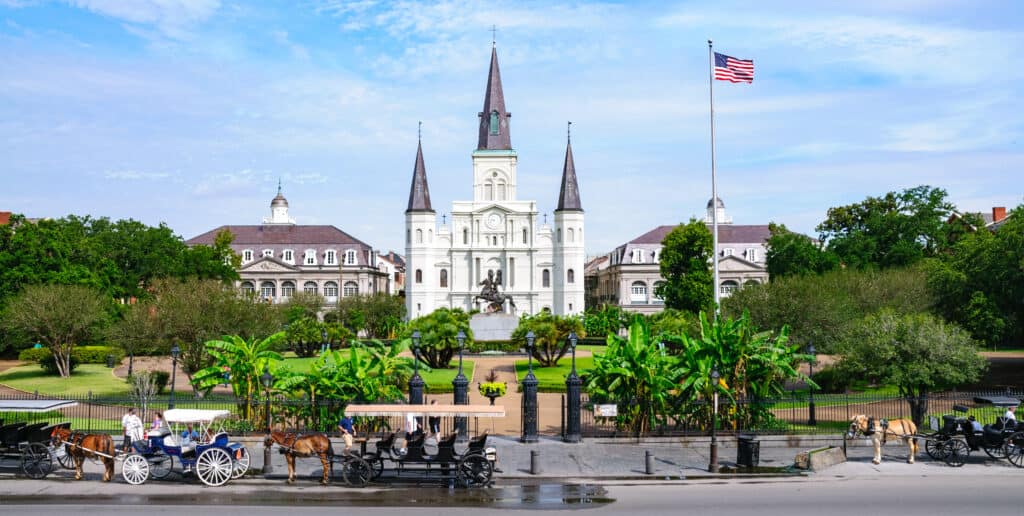
Jackson Square
Jackson Square, a historic park in the heart of New Orleans, was named in honor of the Battle of New Orleans hero Andrew Jackson. The square boasts of beautiful manicured gardens, surrounded by historic buildings including the famed St. Louis Cathedral.
Its open spaces serve as a gathering spot for local artists, street performers, and fortune tellers, adding to the vibrant local culture. Notably, the square is also home to the Cabildo and the Presbytere, two of Louisiana State Museum’s national historic sites.
Royal Street
Royal Street, running parallel to Bourbon Street, is one of the oldest streets in New Orleans, is renowned for its antique stores, stately hotels, and art galleries. As you stroll along, you’ll be greeted with beautiful French Colonial architecture, interspersed with Spanish wrought-iron balconies teeming with hanging plants. The street is partially closed to traffic during the day, transforming into a pedestrian paradise where street musicians serenade passersby.
In addition to the sites above, this tour also includes a bit of a stroll by the Mississippi River, the third largest river in the world!
Book your French Quarter Walking Tour here!
After the tour, I highly recommend that you make your way to Café Du Monde, where you can get the renowned biegnets that they serve here. No trip to New Orleans is complete with out a stop here, believe me.
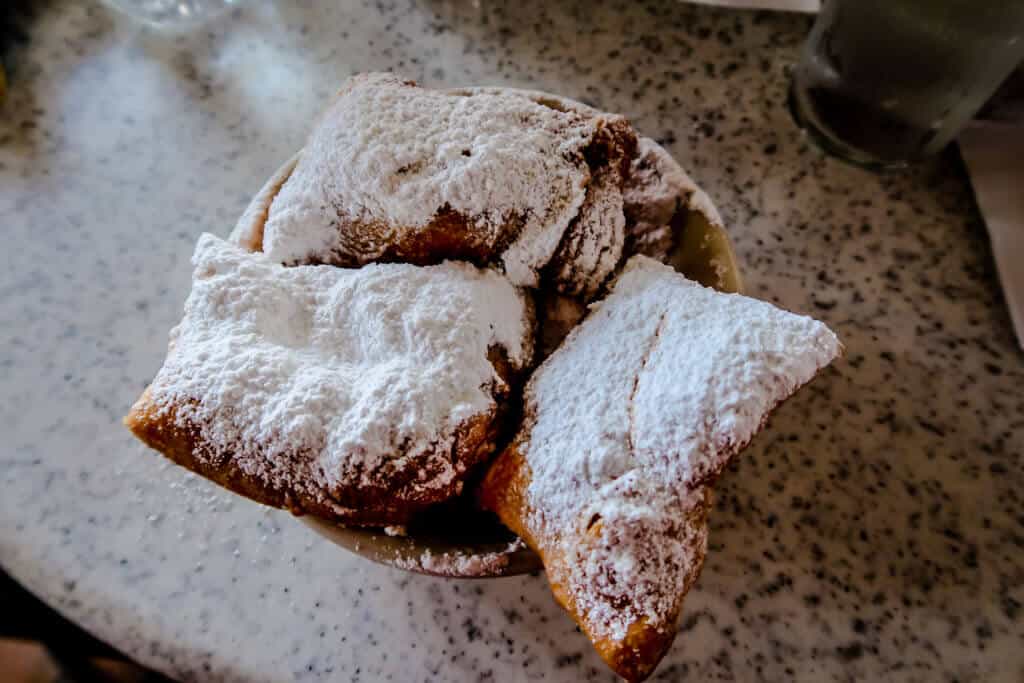
You should also make your way to Bourbon Street, the Quarter’s most famous thoroughfare. This street is lively! you find plenty of street performers, mimes, restaurants, jazz music, and a big party scene here. It is personally not my favorite part of the area, but it should be experienced at least once. I recommend seeing it in the day when it is a bit more cleaned up, if you get my meaning.
EVENING
No trip to New Orleans is complete without a little bit of spook, right? The Ghosts, Vampires and Voodoo Tour will have you scared in all the best ways, while teaching you a little of the city’s history (real or maybe not) along the way. I did this tour, and it may be the only ghost tour I’ve done that actually scared me a little. I highly recommend it for a good time!
After the tour, head to Muriel’s Jackson Square for a bit of an upscale dinner. Housed in a beautifully restored historic building on the edge of Jackson Square, Muriel’s boasts of an elegant dining room adorned with period paintings and chandeliers, with the grandeur only amplifying the culinary delights that await. The menu is a celebration of Creole cuisine, presenting classic dishes with contemporary twists, each carrying the signature flavors and vibrant spices synonymous with New Orleans.
I’ve made it a point to visit this restaurant on many return trips to New Orleans – it is just that good! And the service is wonderful. You’ve got to try the Bread Pudding at Muriel’s!
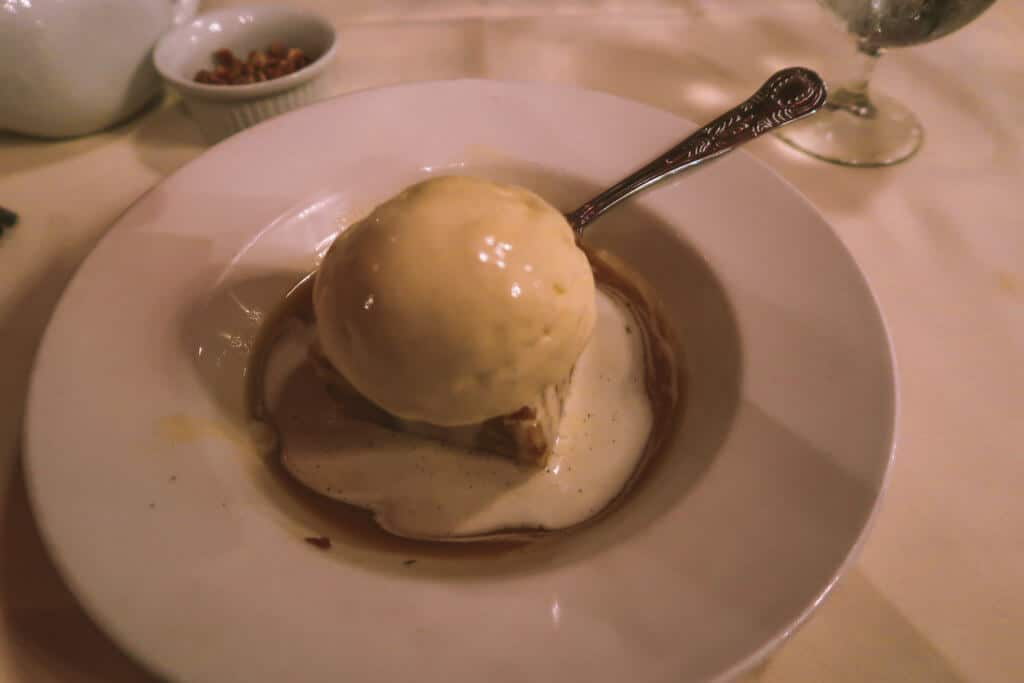
Day 2 | The Garden District, Treme, and Frenchman Street
MORNING
For breakfast on your second day, grab a bite to eat at St. Roch’s market. This marketplace has several vendors who sell food from a variety of cultures – Middle Eastern, Haitian, Asian, and more. I like this place so much that I tried out three different places while there, and all the food I ate was just perfect. Trying at Haitian food at St. Roch’s
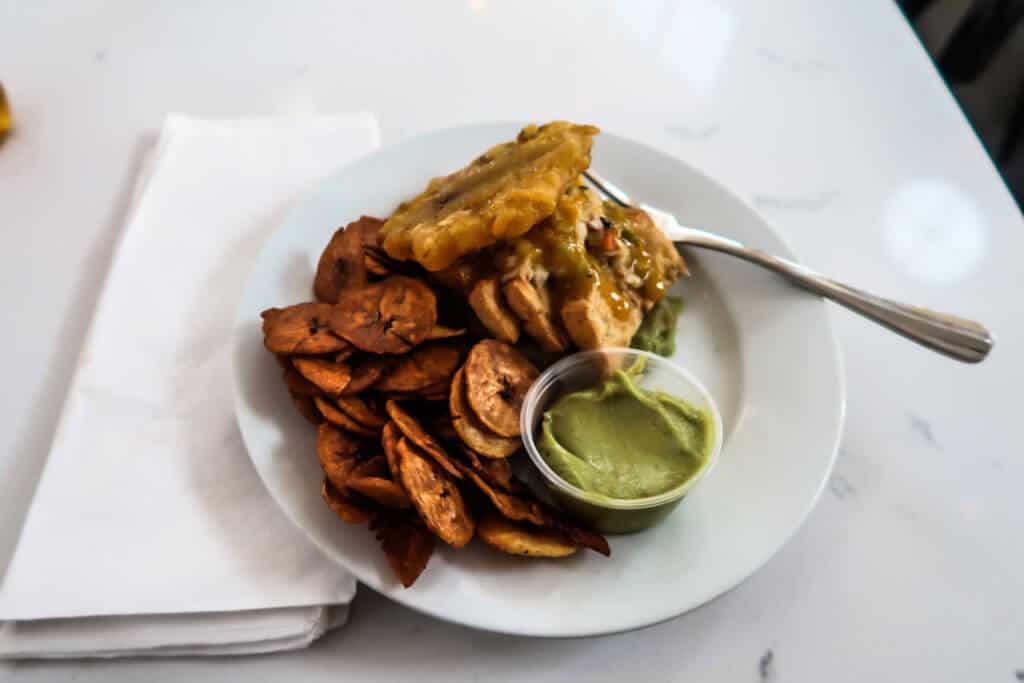
After you eat, head to Treme neighborhood, known for its rich African American history. Treme is one of the city’s oldest neighborhoods, and is known as the birthplace of jazz. Treme is also home to the historic Congo Square, once the gathering place for enslaved Africans, now a living testament to the resilient spirit and cultural dynamism of the community.
The neighborhood is notable for its colorful Creole cottages and the St. Augustine Church, one of the oldest African-American Catholic parishes. The Backstreet Cultural Museum in Treme houses a unique collection of African American street culture artifacts, making it an essential visit for history and culture enthusiasts.
I recommend taking the Treme’ Walking Tour. I’ll say that the tour guide on this one is an AMAZING storyteller, and will have your attention captured throughout the tour. You’ll learn the history of the slaves who originally inhabited this area, and how the experience has changed for black residents in recent times. It is really the perfect way to spend your afternoon in the city.
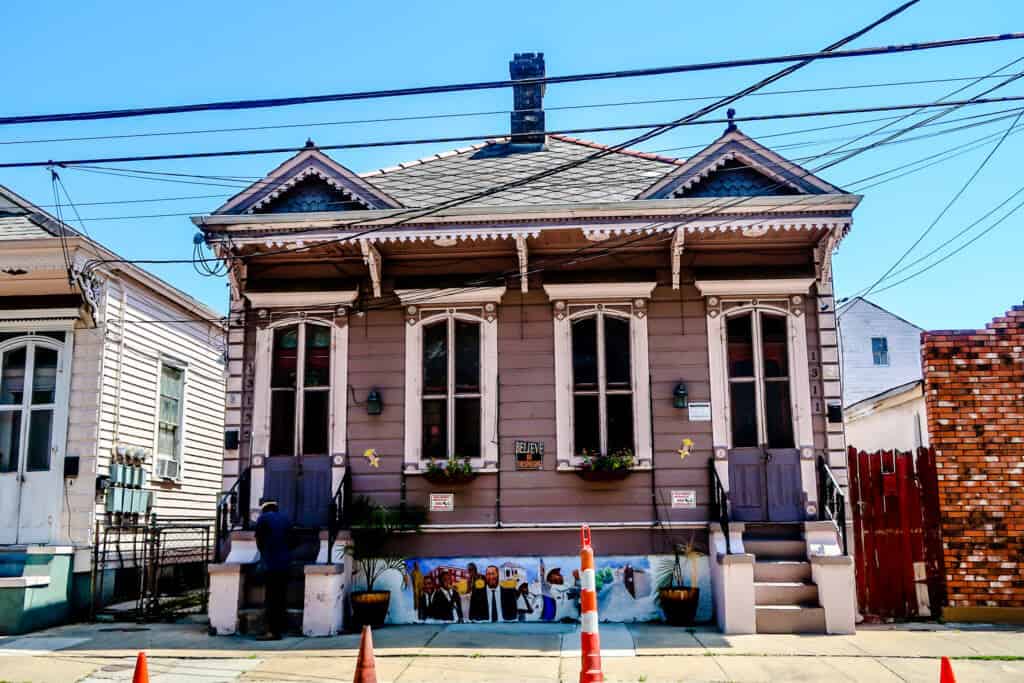
Click here to book your tour now!
AFTERNOON
Next, head out on a Garden District Tour. The Garden District in New Orleans is a picturesque neighborhood noted for its well-preserved historic homes, lined up on the broad tree-lined streets. A stark contrast to the French Quarter, this area reflects the Southern charm and grandeur, with its lush gardens and intricate architectural details featuring Greek Revival, Italianate, and Victorian styles.
Check Rates for the Garden District Tour
A stroll through this district presents a canvas of verdant foliage, vibrant blooming flowers, and Southern live oaks draped with Spanish moss. The area is home to the notable Lafayette Cemetery No. 1, characterized by historic above-ground tombs, and Magazine Street, known for its antique shops, boutiques, and local restaurants. Although the style is a little different, you can see that it serves a similar purpose to the city as Central Park in NYC.
Evening
For some amazing creole food, take a drive over to Neyow’s Creole Café for dinner. This place is always busy, so get there early to avoid long lines / wait times. Know that they don’t take reservations, so you’ll need to plan to get there for an early dinner to avoid long lines.
As your time in New Orleans comes to a close, you must make one stop for a local jazz club performance in Frenchmen Street. Located in the lively Faubourg Marigny neighborhood, it is a vibrant hub of music, food, and culture in New Orleans. Known for its bustling nightlife, the street is lined with renowned music venues that feature live performances ranging from jazz and blues to reggae and rock, attracting both locals and tourists alike.
Here you’ll find many good options for a great jazz experience on this street, including the Spotted Cat Music Club, The Maison, and Blue Nile. On Frenchmen Street you’ll also find a really cool art market, full of unique jewelry, handicrafts, and paintings. The gastronomic scene on Frenchman Street is equally exciting, with many eateries offering traditional Creole and Cajun cuisine, encapsulating the unique flavors of New Orleans.
New Orleans City Map
The map below pinpoints all the locations discussed in this guide:
New Orleans Locations:
- Cafe Amelie
- Cafe Du Monde
- Bourbon Street
- French Quarter Market
- Muriel’s Jackson Square
- St. Roch Market
- Tremé
- Neyow’s Creole Cafe
- Frenchmen Street
What to Do If You Have More Time in New Orleans
If you do have more time in New Orleans, I recommend exploring a few more of the nearby areas, neighborhoods and museums in the city. A few ideas include:
- Ride the St. Charles Streetcar: This street car runs through the heart of the city, offering a charming and convenient way to explore its diverse neighborhoods. Operating since the 19th century, it holds the distinction of being the oldest continuously running streetcar line in the world. It runs from the historic French Quarter and the Central Business District to the grand mansions of the Garden District and the serene Audubon Park. Along the way, passengers are treated to view of splendid architecture, lush oak-lined avenues, and lively commercial districts, showcasing the true essence of the Crescent City.
- Louisiana Bayou Swamp Tour: I’m not really into this, but the swamp tours are quite popular for city visitors. You get to see all of the animals the make the swam there home, including alligators.
- The National WWII Museum: This museum has been designated by Congress as the official museum of the US, and gives you a chance to see the war through the eyes of those who lived through it.
- The Whitney Plantation Tour: Get an understanding of plantation life and what it meant to be a slave in antebellum Louisiana with a plantation tour.
Getting to New Orleans
New Orleans is serviced by the Louis Armstong International Airport (MSY), a relatively small airport that does offer some flights out of the country. The airport is about a 30-minute drive from the city center. It also features the New Orleans Union Passenger Terminal, a major Amtrak hub.
Where to Stay in New Orleans
Where you stay in New Orleans depends a little on what you’re looking for. I have a few neighborhood recommendations that you should check out:
- Jackson Square / French Quarter: The French Quarter is the image that most folks have when they think of New Orleans. It is probably the most picturesque area of the city, full of colorful buildings, cute balconies, and decorative flowers. It does tend the be more on the expensive side, but worth it if you’d like to splurge a bit. I do recommend that you avoid Bourbon Street, however – this area can just get wild (unless you’re really into that). Hotel Mazarin is a good option for this neighborhood, as it’s affordable and full of that New Orleans charm :).

- The Garden District: This area developed as the area for English residents of the city. It is full of large mansions, cute cottages, and beautiful churches. If you’re looking for a slower pace than what you’ll find in the French Quarter, this is the spot for you. The Henry Howard Hotel gives you a taste of that mansion life for an affordable price and is certainly worth checking out!
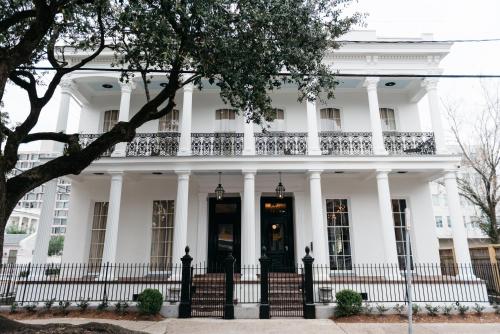
- Marigny: This largely residential area is full of shotgun-style homes, jazz clubs, and Cajun bistros. You get a nice taste of the real New Orleans here. On my most recent visit to this neighborhood, we stayed in an absolutely adorable Airbnb. If you haven’t stayed in and Airbnb before, you can use my link to get $40 off your first stay!
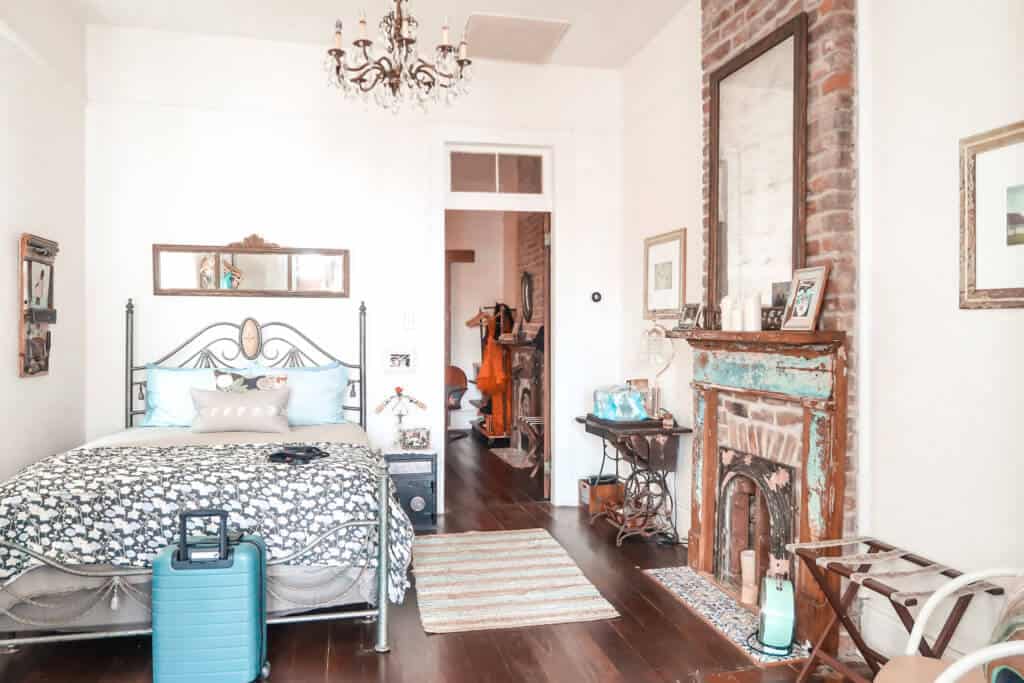
- Canal Street: This street is the breaking point between the French Quarter and the more modern style buildings near the financial district. It is full of shops and theaters, and provides easy access to many areas of the city by the trolley. The Saint Hotel, Autograph Collection offers more of that new and posh vibe you’ll feel in this area of the city.

Getting Around New Orleans
If you aren’t staying in the French Quarter, or not too far from Canal Street, I recommend either being prepared to uber around most of the city, or actually renting a car. There is the New Orleans Regional Transit Authority (RTA), but it is not very efficient, in my opinion.
When to Go to New Orleans
Timing your visit to New Orleans will depend on what you prefer to do while there. Spring (February to May) is arguably the best time to visit New Orleans, when the weather is comfortably cool and the city is alive with numerous events and festivals. The famous Mardi Gras celebrations usually take place in February or March, drawing visitors from around the globe. Music lovers would appreciate the New Orleans Jazz & Heritage Festival, typically held in late April or early May. However, one should be aware that these events also mean crowded streets and higher hotel rates, so planning and booking in advance is recommended.
If you prefer fewer crowds, but still prefer more moderate weather, I recommend visiting in the late fall / early winter. And if you want to experience Essence Fest, know that you will have to suffer a visit in the middle of summer. So dress and plan accordingly.
Language Considerations in New Orleans
English is the language spoken here, of course, with very few French speakers remaining anywhere in the state. However, you will notice a distinct Louisiana accent in the city – one that’s very different than found in the rest of the south.
Money & Prices in New Orleans
Prices in New Orleans tend to be lower than in many other major cities in the US, but the cost of your stay will increase dramatically during times such as Mardi Gras, Essence Fest, Jazz Festivals, or any other time there is a big event happening in the city. If you plan to visit during one of those times, just plan to book as early as possible.
Final Tips | Two Days in New Orleans
That completes this 48 hour New Orleans itinerary! I hope this has given you a taste at what experiencing this city is like. As you can probably see, it is perfect for music lovers, history buffs, and foodies alike.
- Avoid visiting in the summer, if possible – It is incredibly hot and humid in the summer, and things can smell…a bit swampy
- If you have dietary restrictions, do research on where to eat first. There are places that cater to vegans and vegetarians, but it is still not as popular as it is in many other major cities yet
- To save money and avoid the crowds, don’t visit during major city fests. If you just can’t get away, be sure to book your hotel early
- Don’t leave without tasting beignets, you will be missing out greatly if you do!
- New Orleans allows open air drinking…I know someone out there is happy about that. But don’t go too crazy!
